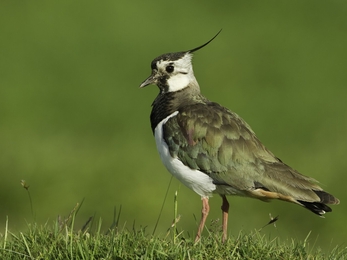For the first time in many years, two breeding pairs of lapwing were discovered this summer at Lecale Fens Special Area of Conservation, outside Downpatrick, in an area where the charity had been working with local farmer John Crea to improve the condition of this designated peatland site.
Simon Gray, Peatland Conservation Officer with Ulster Wildlife, said: “After a chance conversation with the farmer, we visited the fen to witness several newly fledged chicks, alongside their parents. It was fantastic to see them darting around the muddy pools that have formed since we removed four hectares of dense and encroaching vegetation – creating the ideal open wet habitat these endangered birds need to thrive.”


